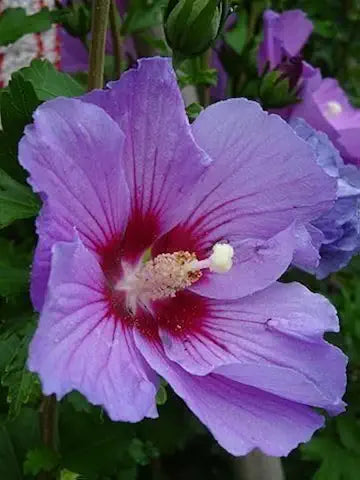Hibiscus Flower Purple Easy Grow Plant Seeds
Couldn't load pickup availability
Description
Hibiscus Seeds
Characteristics and Uses of Hibiscus Plants
Hibiscus plants are beloved for their large, colorful blooms that add a touch of tropical elegance to any garden. Known for their vibrant flowers in shades of red, pink, yellow, and white, these plants are perfect for creating eye-catching garden borders, containers, or even as indoor plants. As a popular choice for flowering plant seeds, hibiscus attracts pollinators like bees, butterflies, and hummingbirds, making it a wonderful addition to any wildlife-friendly garden. With proper care, hibiscus plants can thrive in many types of gardens, providing long-lasting beauty throughout the season.
Growing Conditions for Hibiscus Plants
- Light Requirements: Hibiscus plants thrive in full sun, requiring at least 6 hours of direct sunlight per day.
- Temperature: Hibiscus prefers warm climates and does best in temperatures between 60°F and 90°F (15°C to 32°C).
- Soil: Well-draining, rich, and slightly acidic to neutral soil is ideal for hibiscus.
- Watering: Keep the soil consistently moist but avoid waterlogging. Ensure good drainage to prevent root rot.
Planting Tips for Hibiscus
- Seed Preparation: Soak hibiscus seeds in warm water for 12-2hours to enhance germination.
- Planting Depth: Plant seeds about 1/inch deep in well-draining soil.
- Spacing: Allow at least 2-3 feet of space between plants to accommodate their full growth.
- Germination Time: Hibiscus seeds generally take between 14-21 days to germinate, depending on warmth and moisture levels.
Watering Instructions and Tips
Hibiscus plants require regular watering to keep the soil moist, especially during the growing season. However, avoid overwatering as it may lead to root rot. Make sure the soil has good drainage, and adjust watering frequency based on the weather and season. Reduce watering in the winter when the plant is dormant.
Growing Zones
- USDA Hardiness Zones: Hibiscus plants grow best in zones 8-.
- Global Zones: Perfect for tropical and subtropical climates, hibiscus also grows well in Mediterranean regions.
Key Benefits & Uses
- Non-GMO seeds: These hibiscus seeds are free from genetic modifications, ensuring a natural growth process.
- Attracts Pollinators: Hibiscus flowers are excellent for attracting pollinators like bees, butterflies, and hummingbirds.
- Vibrant Blooms: The large, colorful flowers make hibiscus plants perfect for ornamental gardens, borders, and containers.
- Low Maintenance: Once established, hibiscus plants require minimal care, making them ideal for both experienced and beginner gardeners.
Best Uses in the Garden & Landscape
- Ornamental Borders: Hibiscus plants make a stunning focal point in garden borders or flower beds.
- Container Gardens: Hibiscus is perfect for container gardening, adding vibrant color to patios and balconies.
- Tropical Landscaping: Create a tropical paradise with hibiscus plants, adding an exotic touch to your landscape.
Conclusion
Hibiscus plants are a beautiful, vibrant addition to any garden or home. With their large, colorful flowers and ability to attract pollinators, they are an excellent choice for gardeners looking to add an exotic touch. At bijaseeds, a big, trusted name in the seed world, we offer high-quality, non-GMO hibiscus seeds to help you create your dream garden.
FAQ
How do I plant hibiscus seeds?
Soak hibiscus seeds in warm water for 12-2hours before planting them in well-draining soil about 1/inch deep. Keep the soil moist and place the seeds in a warm, sunny spot for optimal germination.
When do hibiscus plants bloom?
Hibiscus plants typically bloom in late summer to early fall, but the exact timing may vary depending on the climate and growing conditions.
Can hibiscus be grown in pots?
Yes, hibiscus plants grow well in containers, making them a great option for patios, balconies, and smaller spaces. Be sure to use a large pot with good drainage for the best growth.







